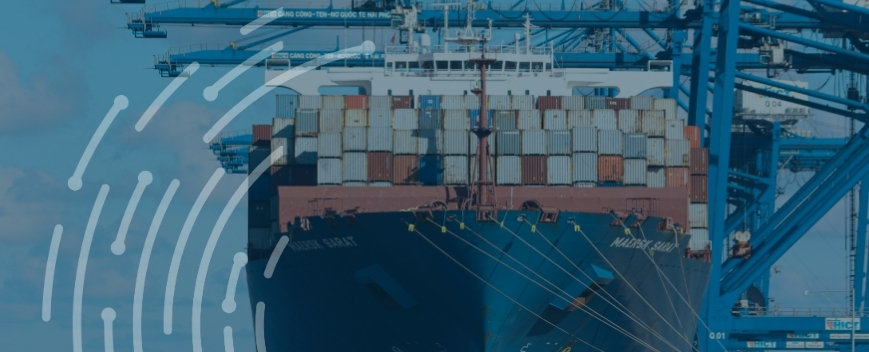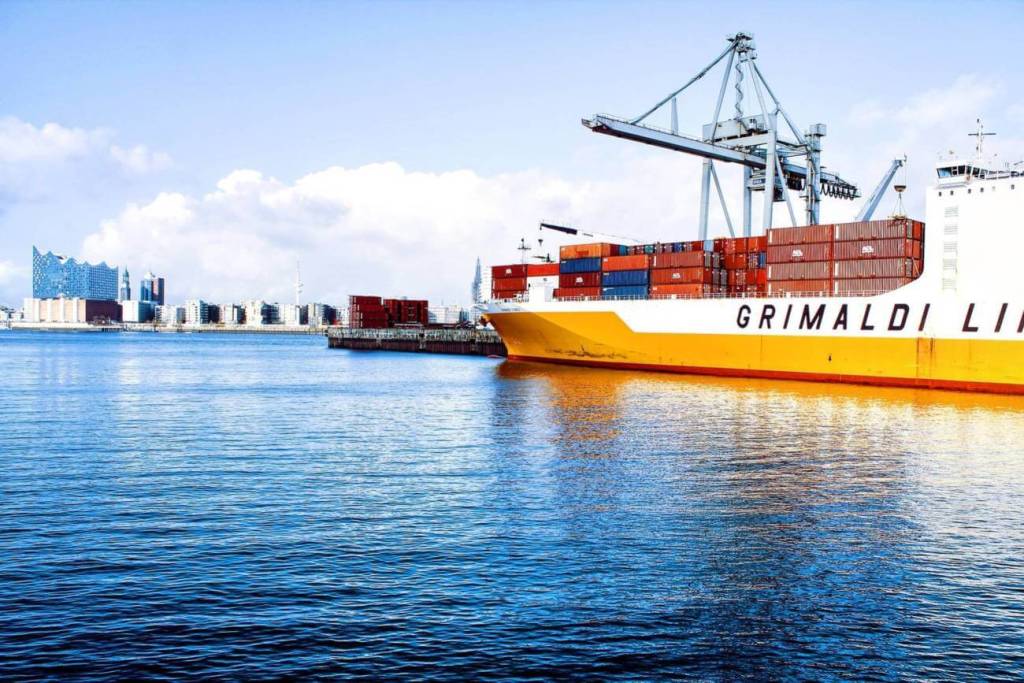Carriage of Goods in International Trade


Access trade, receivables and supply chain finance
We assist companies to access trade and receivables finance through our relationships with 270+ banks, funds and alternative finance houses.
Get startedContent
International trade relies on international transport which provides the basis for which goods and services cross international boundaries.
International transport also provides an important legal function in international trade since it provides a link between the buyer and seller of the goods or services being traded.
Definition of carriage of goods contract, bill of lading
Carriage is simply defined as the transportation of goods or cargo from one location to another.
It is however not as simple as it sounds as it includes other components such as loading, stowage, transportation, unloading and delivery.
A carriage of goods contract is therefore the legal document entered between a carrier and a sender (or consignor) where the carrier undertakes to move goods in return for payment to another person, usually the receiver (or consignee).
The term “bill of lading” refers to a document evidencing the loading of goods on a ship.
It is believed that documents similar to the bill of lading had been in use as early as Roman times.
The first statutes date back to the 11th century which saw the rise of Mediterranean commercial cities such as Venice and Genoa.
Statutes were enacted at that time that required each ship to be accompanied by a clerk who was in charge of a catalogue which served as proof of the shipper’s receipt of goods.
Contracts between shippers and carriers have become more complex, and bills of lading now state the terms of the contract hence making them a prevalent instrument in maritime transport.
A bill of lading enables the consignee at the place of destination to prove his rights to the goods.
The modern bill of lading can be described as a legal document or shipment receipt by or on behalf of the carrier and issued to the shipper acknowledging that goods, as described in it have been shipped in a particular vessel to a specified destination or have been received in the ship owner’s custody for shipment.
The bill of lading, therefore, is a legally binding document which provides the carrier and the shipper with all the information necessary for the accurate processing of shipment goods.
It serves three main functions.
- A document of title to the goods described in the bill of lading.
- A receipt for the items being delivered.
- It sets out the terms and conditions agreed for the transport of goods.
When the goods are shipped, the physical ownership of the goods is passed from the exporter to the carrier.
At this point, payment may not yet have been received by the exporter, making the bill of lading a critical part of the transaction.
This allows the exporter to turn over ownership of the products to the carrier, giving the exporter indirect control of the goods during the carriage of goods process.
In common law, the bill of lading acts as a semi-negotiable instrument, however, under statutes and under international conventions, bills of lading are entirely negotiable instruments in all legal systems, unless they display on their face that they are not negotiable.
There are two main types of bills of lading in foreign trade that may serve as a title document:
- a negotiable (open) bill of lading
- a non-negotiable (straight) bill of lading.
The negotiable bill of lading instructs the carrier to deliver the goods to someone in possession of the original negotiable bill, which in turn reflects the title and control of the goods.
The non-negotiable bill of lading sets forth a particular consignee to whom the goods are to be delivered and does not in itself reflect the ownership of the goods.
For this purpose, a negotiable bill of lading must be used for the selling of goods.

Carriage of Goods
Carriage of goods is, by law, the movement of goods by land, sea, or air.
This includes packaging, storage, transport, unloading, and distribution and the carriage of goods can be unimodal or multimodal.
- Unimodal refers to the carriage of goods when only one mode of transport is used.
- Multimodal carriage of goods refers to a situation where a combination of methods is used.
Unimodal international transport is regulated by international conventions e.g. the Warsaw Convention, the Hague-Visby Rules, and Convention relative au contrat de transportinternational des merchandises de route.
Carriage is often the final step in the contract for the sale of goods, the shipper is often a freight vendor, and the final consignee is also the recipient of the freight.
Risk and title to the goods will often change during the contract of carriage.
Carriage of goods by sea
Before the advent of railroads, water was the most popular mode of transport.
All through the 19th century, contracts for the transport of goods by sea were of an asymmetrical type based on the differences in the bargaining power of the ship owner (carrier) and the cargo owner (shipper).
They also insisted on the inclusion of clauses in the contract for carriages which exempted them from their basic common law liabilities as stated in national laws.
The international community acknowledged that, in order for international trade to thrive, it would be necessary to create an international legal framework that could serve two purposes:
- flexibility to assign risks in line with their commercial needs, and
- prevention of abuse and protection for parties in a weaker bargaining position.
This then resulted in the introduction and implementation of the Hague Rules in the 1920s, the first-ever international convention to unify certain laws relating to bills of lading and to establish a minimum standard of protection for freight interests.
The Hague Rules were later amended in 1968 as Hague-Visby Rules.
Most maritime nations have ratified or adhered to the convention, and others have enacted them in their domestic legislation.
A number of international organizations strongly criticized the Hague-Visby rules as being out of line with modern shipping and international trade activities.
In the United Kingdom, the 1971 Carriage of Goods by Sea Act gave force of law to the Hague-Visby laws.
The Carriage of Goods by Sea Act 1992 changed some elements of the law on the shipping of goods, updating and replacing the Bills of Charge Act 1855.
The preliminary work on the new regime was carried out by the Comité Maritime International (“CMI”) until the end of 2001 and was eventually passed on to the United Nations Commission on International Trade Law (“UNCITRAL”), which finalized the draft text of a new convention following almost a decade of intensive work.
In December 2008, the General Assembly of the United Nations unanimously adopted a new shipping treaty, the United Nations Convention on Contracts for the International Carriage of Goods Wholly or Partly by Sea.
This convention was then formally opened to signature at Rotterdam on September 23, 2009, after which it has since been popularly christened the Rotterdam Rules.
Carriage of goods by air
A significant measure of universal uniformity has been accomplished by air regulation on the carriage of goods.
With the consequent problems of conflict of laws when a disagreement occurs between contracting parties of various nationalities, governments have found it appropriate to collaborate in the development of mutually agreed conventions for the regulation of international transport.
The Warsaw Convention of 1929, as revised by The Hague Protocol of 1955 exemplifies a particular regulatory approach to the problems of the transport of goods.
It constitutes a significant step towards the universal unification of the laws regulating the transportation of goods by air.
The Convention shall extend to the international carriage of people, luggage and awarded goods, as well as to the free carriage of goods by an air transport undertaking.
The Guadalajara Convention of 1961 was rectified as it sought to clearly define what was meant by the term `the carrier’.
The Guadalajara Convention was incorporated into English law by the Carriage by Air (Supplementary Provisions) Act 1962.
In 1971, a consensus was reached in Guatemala City on a protocol to amend the 1955 Warsaw-Hague Convention, raising the monetary cap on the carrier’s liability in respect of passengers and their luggage but changing the relevant provisions in relation to cargo.
The Protocol has, however, never entered into force.
Three additional protocols were drawn up in Montreal, known as the Montreal Additional Protocols Numbers 1, 2, and 3 of 1975 as a result of the IMF demonetizing gold and preventing member states from setting official prices for gold in relation to a currency.
A further modification to the Warsaw-Hague Convention 1955 incorporated the most important changes in the liability regime for freight transport known as the Montreal Additional Protocol Number 4 of 1975.
The Montreal Convention of 1999 (Convention for the Unification of Certain Rules Relating to International Carriage by Air) was to take precedence over any rules which apply to international carriage by air.
The Montreal Convention of 1999 came into effect on 4 November 2003.
Carriage of goods by road
The regulation on the international carriage of goods by road was unified in 1956 with the Convention on the International Carriage of Goods by Road (CMR) drafted by the United Nations Economic Commission for Europe (ECE) based in Geneva and parties to CMR consisting of both ECE and non-ECE members countries.
This contract is known as CMR, which is derived from the French title convention relative au contrat de transport international de marchandises par route.
CMR is also known as CMR consignment note.
The pact standardizes the terms of the contract of carriage, the liability of the carrier and the form of documentation to be used.
CMR sets out a single set of conditions for the complete movement of goods, irrespective of the mode of transport or the current legal jurisdiction.
The terms of the convention are binding on each contract for the carriage of goods by road for hire or reward when the place of taking over of the goods and the place of delivery as specified in the contract are located in two different countries of which at least one is a contracting party.
Parties in a Carriage of Goods Contract
Consignor
This is the person or firm that ships goods or gives goods to another party for care.
The consignor can also be a retailer who sells the goods in the domestic market and in certain cases, the consignee functions as an exporter or shipper in foreign trade.
A sourcing agent who is the main point of contact for your exports and owns the exports may also be referred to as a consignor, including locating your facilities and organizing the necessary paperwork.
Consignee
The consignee is the importer of record for the shipment.
They are also responsible for paying duties and any additional freight charges and are generally recognized as the legal owner for customs purposes.
Nevertheless, only after payment of a seller’s invoice should formal ownership of the consignment be passed to the consignee.
Owner of cargo
The owner of the cargo would literally mean the owner of the freight.
This could be an individual or an organization that has paid for the cargo under a legal contract.
Legal precedent has acknowledged the right of the owner to sue for loss or damage to the goods.
Financing Companies
International sale transactions are generally financed using letters of credit and financial institutions which have financial instruments and products that facilitate international trade and commerce.
Business financing can help reduce global trade risks by integrating exporter and importer’s differential needs.
Intermediaries
Transport intermediaries or third-party logistics companies may be parties to shipping, warehousing, distribution, and other movements of goods on behalf of goods providers and shipping companies.
Transport intermediaries (land, sea, and air) play a key role in international trade and the growth of the global economy.
Ship owner
The ship owner is simply the owner of the ship carrying the cargo. Sometimes the ship owner will be the “carrier,” of the cargo and the person responsible for any loss or damage.
Legal Framework for Carriage of Goods
International law is part of national law and must be ascertained and administered by the courts of justice of the appropriate jurisdiction.
In order to avoid the extensive nationalisation of carriage laws, there was a need to draft and rectify treaties and conventions that would regulate the carriage of goods internationally.
Hague Rules 1924
The international maritime community set out to develop rules that would regulate carriage by sea.
Over the years one convention has succeeded the other to such an extent that today there are several international regimes regulating the carriage of goods by sea.
The economic conflict between carriers and shippers over risk allocation was recorded as early as the 1680s and the need for an international convention was felt.
The International Law Association and the Comité Maritime International held a series of diplomatic conferences from 1921 to 1924, building a compromise draft between shipper and carrier, which culminated in the signing of an International Convention for the Unification of Certain Rules of Law Relating to Bills of Lading in Brussels in 1924; this Convention is commonly referred to as The Hague Rules.
This convention was adopted in an attempt to establish a balance between commercial risks and legal responsibilities between carriers and cargo owners.
These international rules were designed to provide a definitive measure of protection for freight owners.
In return, some valuable exemptions from liability were granted to carriers in certain circumstances.
Over time the provisions of this convention were deemed inconsistent with developments in the shipping industry such as the use of containers in transport, and changes in vessel design, coupled with the increase in trade, certain weaknesses became apparent and there was a need for amendments to the Hague Rules.
These were dealt with by the introduction of an amended set of rules under a Protocol signed in 1968.
Hague-Visby Rules 1968
The terms of The Hague rules were amended in Brussels by the protocol amending the International Convention for the Unification of Certain Rules of Law Relating to Bills of Lading in 1968, which was called the Visby Protocol.
Accordingly, the purpose of the Visby protocol was to amend and update The Hague rules to form a consolidated version known as the Hague-Visby Rules.
The amendments contained in the Visby rules were minor and not very significant and failed to get universal approval. African nations and some developed nations raised concern that they were not consulted and did not take part in the Visby amendments hence necessitating the need for a new regime.
Hamburg Rules 1978
The United Nations Conference on Trade and Development (UNCTAD), which works to promote the interests of developing nations, negotiated the introduction of a new regime with help from the legal body of the United Nations for harmonization of international trade law, the UNCITRAL.
The United Nations Conference on the Carriage of Goods at Sea was held in Hamburg in 1978 and adopted as the United Nations Convention on the Carriage of Goods by Sea 1978.
The Hamburg Rules shifted the balance of duty of care and of liabilities more towards the carrier which resulted in scepticism towards the ratification of the Hamburg Rules by major shipping nations which later led to its collapse and the introduction of a new regime known as the Rotterdam Rules 2008.
Rotterdam Rules 2008
The Rotterdam Rules, also known as the United Nations Convention on Contracts for the International Carriage of Goods Wholly or Partly by Sea. were adopted by the UN in 2008 after inter-governmental negotiations that took place between 2002 and 2009 under the leadership of the United Nations Commission for International Trade Law (UNCITRAL) in collaboration with Comité Maritime International (CMI).
The Rotterdam Rules approach the other contentious issue of carriers’ liabilities more tactfully than the previous regimes.
This enables it to establish equality in the allocation of risks and strike a balance between the consignor and the carrier.
The Rotterdam laws also apply to multimodal transport regarding international maritime law and deal with a variety of problems that are not actually subject to compulsory international law.
Nonetheless, the laws have not been able to attract support from all regions. Critics contend that in contrast with the Hague Rules the Rotterdam rules are formulated in a very complicated way and are similar to the Hague Rules
Responsibilities and Liabilities of Parties
Responsibilities of the Consignor
The consignor has several responsibilities which include informing the carrier of any dangerous goods being carried.
They must ensure that approved packaging is used and that the goods are well marked or labelled and ultimately has the responsibility of ensuring that the goods have the proper documentation before shipping.
Additionally, the consignor has a duty to pay for the freight charges levied by the carrier.
Responsibilities of the Vessel Owner
The vessel owner has the most critical responsibilities under a carriage of goods contract.
First, the vessel owner has to provide a seaworthy ship or airworthy aircraft.
This is an absolute undertaking such that if the ship is unseaworthy and that unseaworthiness causes loss or damage to the goods, the vessel owner is liable for that loss, whether they exercised reasonable care or not.
The vessel must be seaworthy at the beginning of the voyage.
Secondly, the vessel owner has a duty to care for the cargo.
This means that the carrier or vessel owner must deliver to the consignee the cargo without loss or damage.
Thirdly, the carrier must deliver the cargo without delay if a delivery date has been agreed on. Fourthly, the carrier must not deviate from the agreed route or the route ordinarily used for that voyage.
Responsibilities of the Consignee
The consignee is the person to whom a shipment of goods is to be delivered and thus has certain legal rights and responsibilities.
The consignee is required to provide the bill of lading issued by the carrier to receive the consignment.
They must also bear the responsibility of paying for customs charges and other demurrage charges that may be incurred by the carrier at the port of entry.
Lastly, the consignee also has the responsibility of inspecting the goods for any possible damage.

Remedies for Breach of Contract
In a contract for carriage of goods, any breach can be remedied by an award of damages, just as is in many commercial agreements.
However, there are sometimes when equitable remedies such as injunctive relief might be appropriate.
For example, in the event a carrier refuses to issue a bill of lading, the best remedy might be obtaining an injunction compelling the carrier to issue a bill of lading to the consignee.
In most carriage of goods contracts, the duties of parties require either payment of money or the performance of specific services which have a monetary value that can be compensated by way of damages.
Conclusion
Contracts for the carriage of goods have evolved over time, just as the laws and rules governing carriage of goods have.
It is important when entering into a contract for the carriage of goods to ensure that the basic and formal requirements are contained in the contract.
Besides the descriptions of the parties and service being rendered, is important for the contract to capture the place where the goods are taken over by the carrier, the carrier’s place of departure, and the final destination of the goods.
The planned date of arrival of the goods should also be included in the contract.
The nature and value of the goods are also important in the contract as they enable the carrier to appropriate precautions to ensure their safety.
These points of a contract of carriage of goods are important because they make it possible to identify the goods that will be moved, the consignor, the carrier, the consignee, and the method by which the consignment is transported.
They also lay out the legal obligations of all parties to the contract.
- All Topics
- Key Terms
- Incoterms Resources
- Podcasts
- Videos
- Conferences















